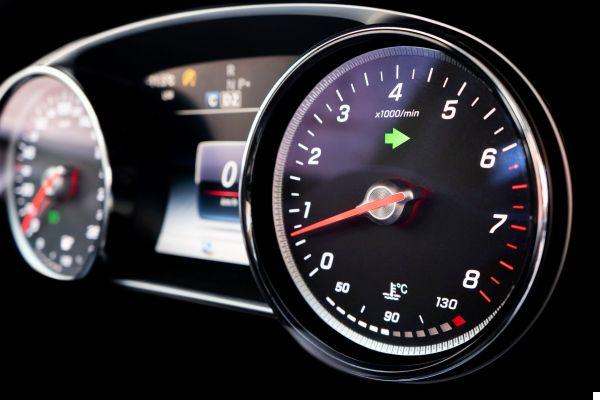
In this article, we are going to address the various concerns that users have about the revolutions per minute (RPM) of cars at different speeds. We will explore the relationship between RPM and speed, as well as its impact on fuel consumption. We will also answer the question about the minimum revolution of a car. Read on for all the answers!
What is Revolutions Per Minute (RPM)?
Before we get into the details, it's important to understand what revolutions per minute (RPM) is. RPM is a measure of an engine's rotational speed, that is, how many times the engine's crankshaft rotates in one minute. This measurement is crucial to understanding a vehicle's performance and efficiency.
Relationship between RPM and speed
One of the main user concerns is how RPM varies at different speeds. The relationship between RPM and speed depends on several factors, such as gear ratio and engine type. However, in general, as speed increases, RPM tends to increase as well.
For example, at a speed of 110 km/h, the RPM is likely to be lower than at a speed of 120 km/h. This is because at higher speeds, the engine needs to spin faster to maintain the vehicle's power and performance. On the other hand, at a speed of 100 km/h, it is possible that the RPM is lower than at higher speeds, indicating less effort from the engine.
Does stirring the car more help to spend less fuel?
A common question that arises is whether revving the car more can help to use less fuel. The answer to this question is somewhat complex. In general, revving the car at high RPM can increase fuel consumption, since the engine is working harder. However, in certain cases, revving up the car can be beneficial for fuel efficiency.
For example, when passing another vehicle on the highway, it may be necessary to rev up the car to get the extra power needed. However, under normal driving conditions, keeping the RPM in an optimal range can help save fuel. Consult your vehicle's owner's manual for the recommended RPM range for efficient driving.
minimum revolution of a car
Another frequent question is what is the minimum revolution of a car. Minimum revolution, also known as idle, is the idle speed of the engine when the vehicle is in neutral or stopped. This speed varies depending on the model and make of the vehicle, but in general, it is usually around 600-800 RPM.
It is important to note that idling the engine for long periods of time can be unnecessary and waste fuel. It is always advisable to turn off the engine if the vehicle is going to be stopped for more than a minute.
Frequently Asked Questions (FAQs)
1. At what RPM should I change gear?
The proper time to change gear varies depending on the vehicle and driving conditions. However, as a general rule of thumb, it is recommended to shift gears around 2500-3000 RPM for efficient driving. This can help keep the engine in an optimal RPM range and save fuel.
2. Is it bad to rev the car when cold?
Revving the car cold can be harmful to the engine, since the oil has not yet reached its optimum operating temperature. This can cause premature wear of engine parts. Therefore, it is advisable to allow the engine to warm up for a few minutes before revving it up.
3. Does RPM affect engine life?
RPM can have an impact on engine life. Constantly revving your engine at high RPM can shorten engine life by putting increased stress and wear on engine parts. It is important to keep RPM within the manufacturer's recommended range and perform regular maintenance to ensure long engine life.
Conclusion
In short, the revolutions per minute (RPM) of cars vary at different speeds, being higher at higher speeds. Revving the car higher can increase fuel consumption, although in certain cases it may be necessary to gain additional power. The minimum revolution of a car is usually around 600-800 RPM. Always remember to refer to your vehicle's owner's manual for specific information on your model.
We hope this article has resolved all your questions about the RPM of cars at different speeds. If you have any other questions or comments, feel free to leave them below. We will be happy to help you!
Until next time!
The Pistonudos.com team


























